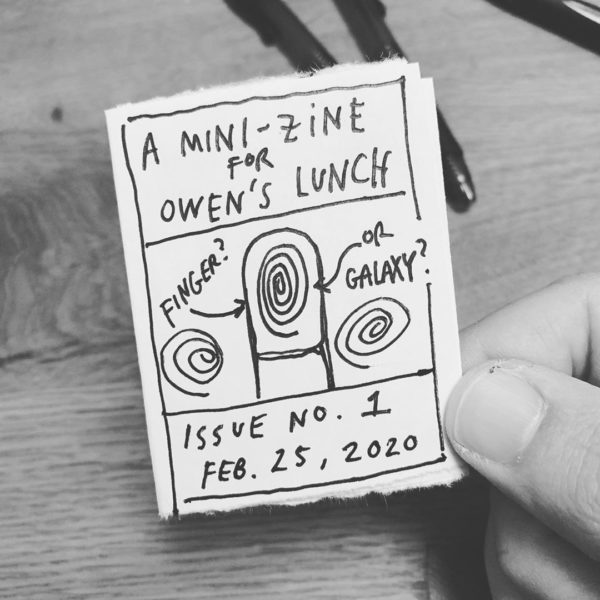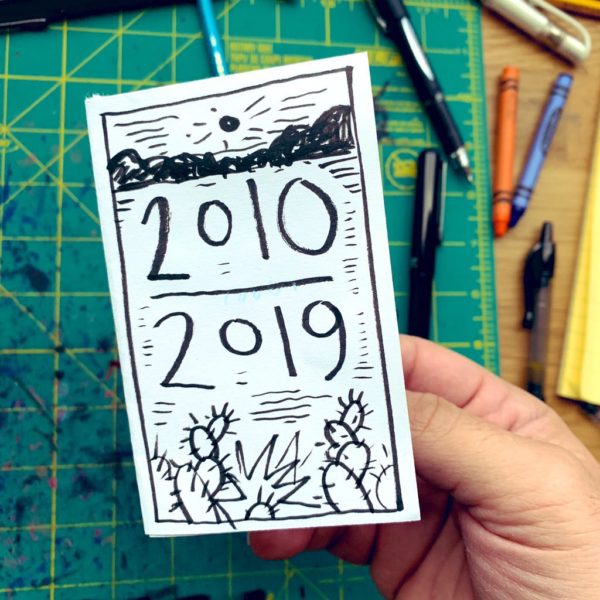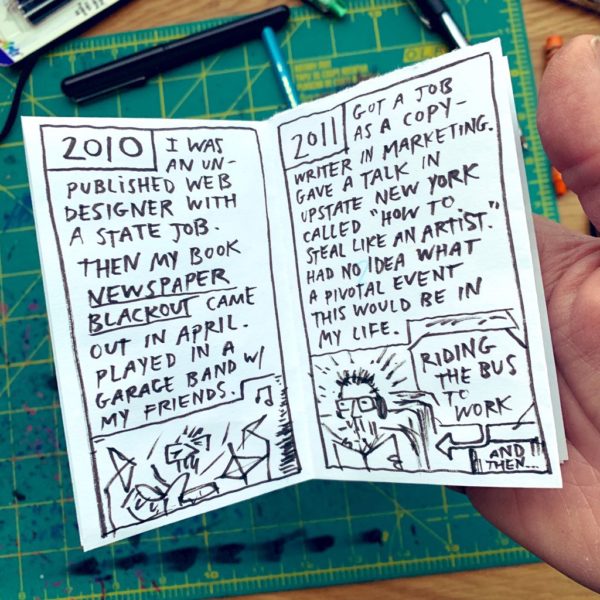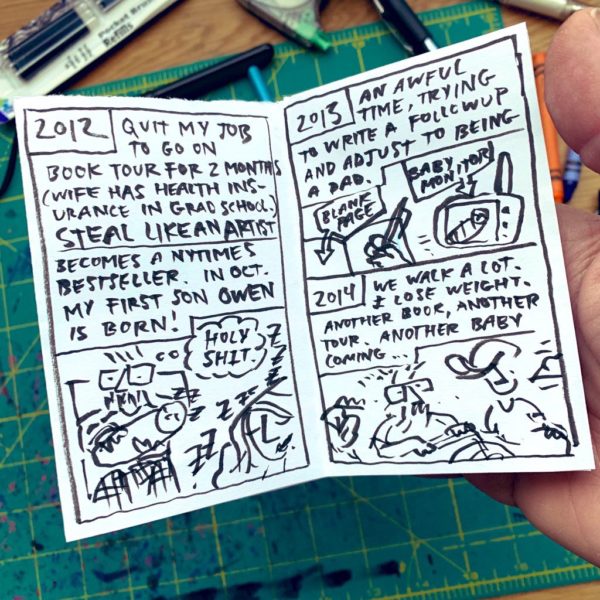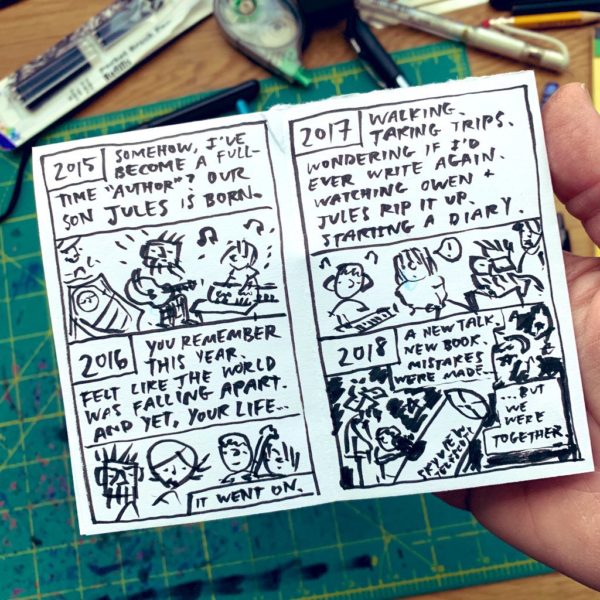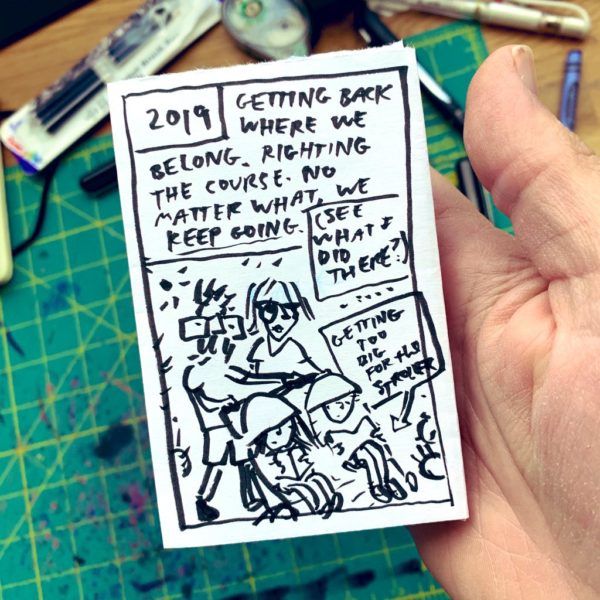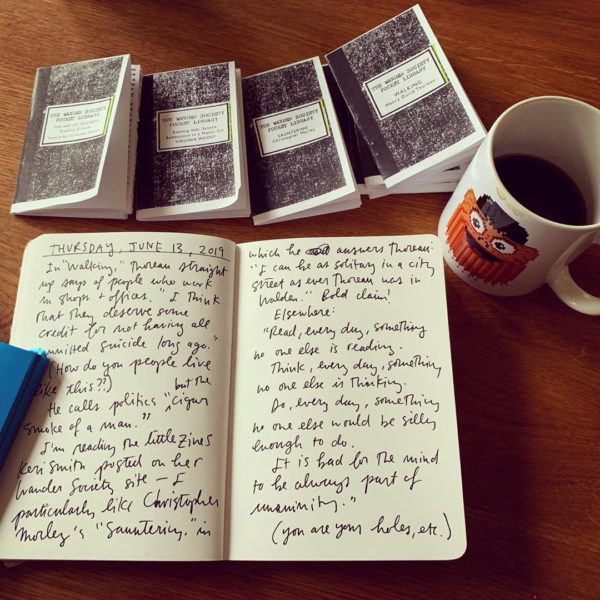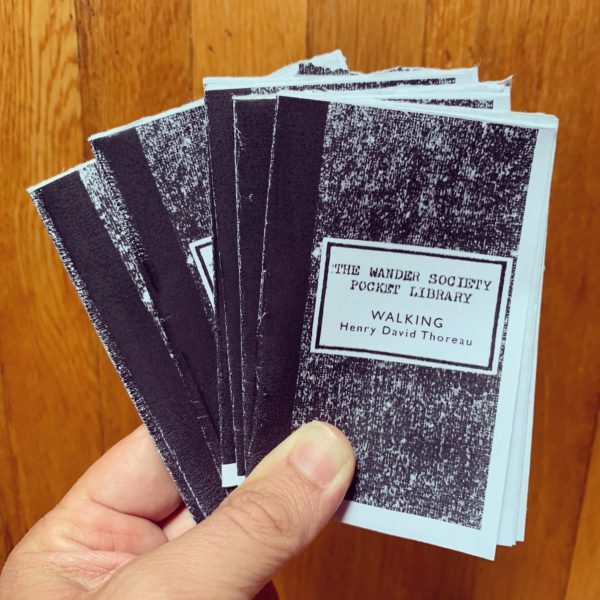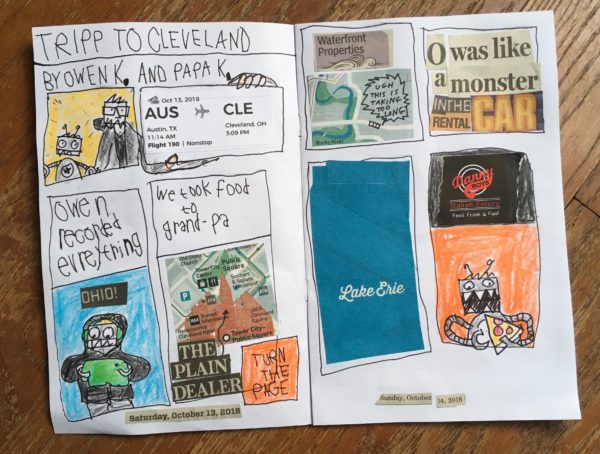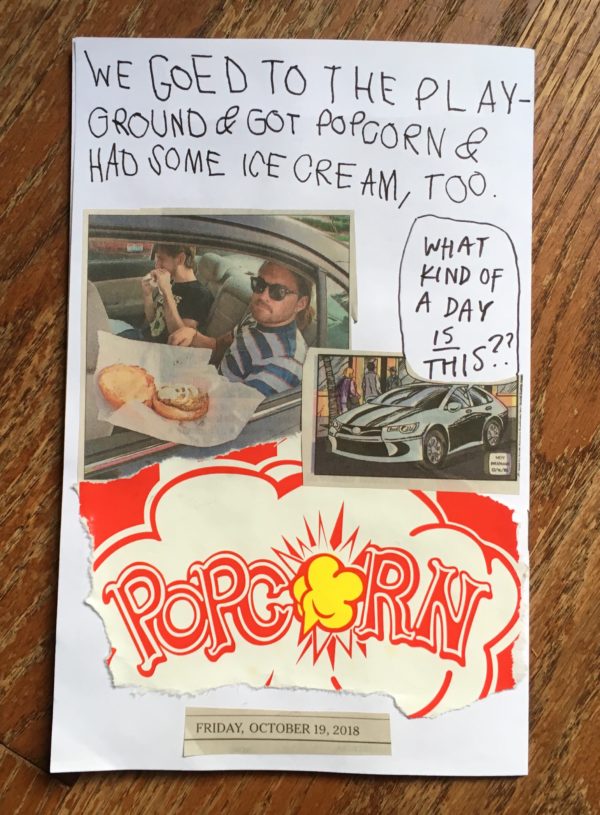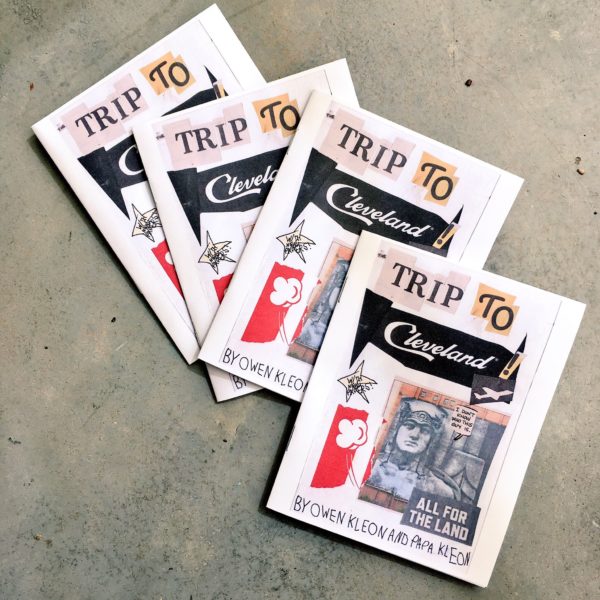Inspired by Malaka Gharib’s zines and Warren Craghead’s drawings for his daughter’s lunches, I’ve been making these tiny little zines for my son Owen’s lunch out of a single sheet of paper. (See more of them below.)
It’s a really simple and old technique. Nothing fancy. Tons of people use it. I first learned about it years and years ago from the great book, Whatcha Mean, What’s A Zine?
Here’s my version in a short video:
Here’s a diagram from Keri Smith’s wandering zines:
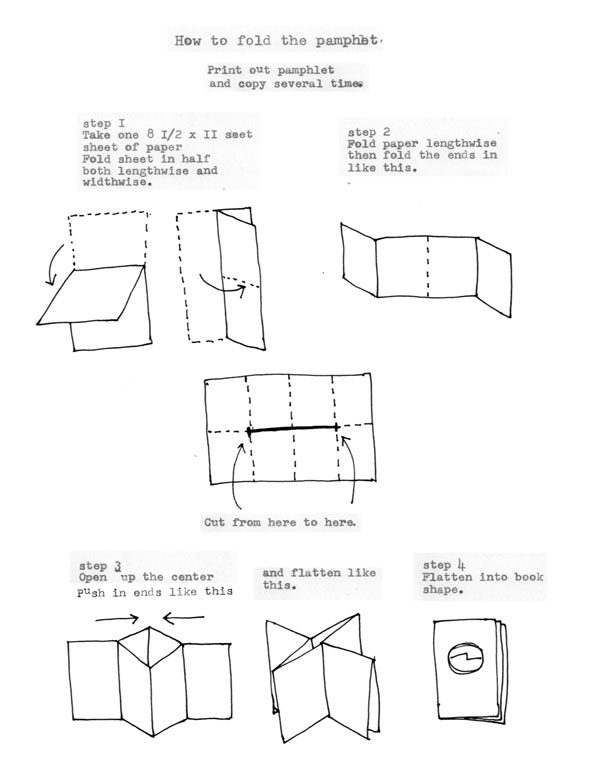
And here are some of the results (see more on my Instagram):
https://instagram.com/p/B9AyNxLAIgc
https://www.instagram.com/p/B9CFrH2Aq7n/
https://www.instagram.com/p/B9C6tOnHf36/
Here’s a photo of Owen and I holding up the one-page zines we made while hanging out at the Lone Star Zine Fest:

Happy zine-making!!
Filed under: zines
